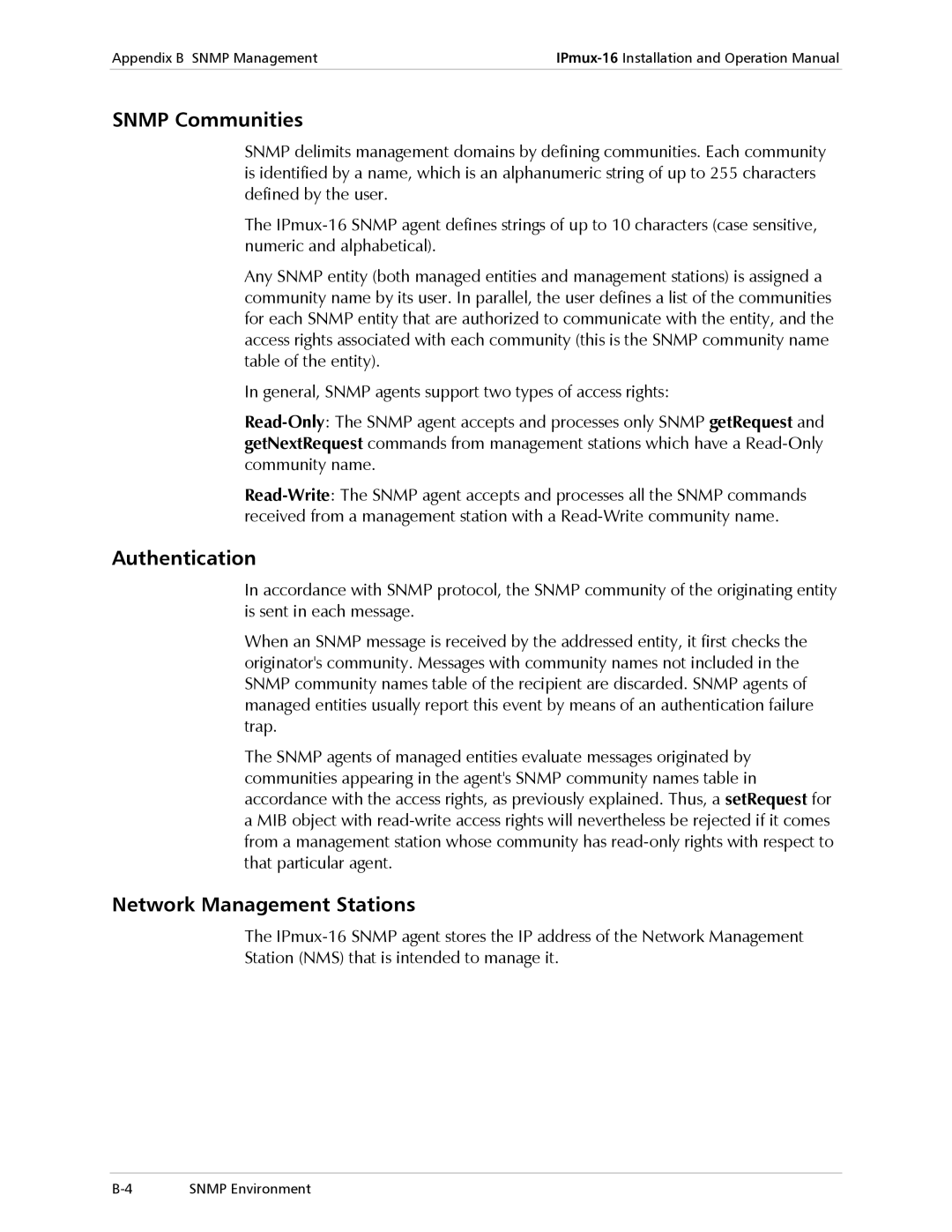Appendix B SNMP Management | |
|
|
SNMP Communities
SNMP delimits management domains by defining communities. Each community is identified by a name, which is an alphanumeric string of up to 255 characters defined by the user.
The
Any SNMP entity (both managed entities and management stations) is assigned a community name by its user. In parallel, the user defines a list of the communities for each SNMP entity that are authorized to communicate with the entity, and the access rights associated with each community (this is the SNMP community name table of the entity).
In general, SNMP agents support two types of access rights:
Authentication
In accordance with SNMP protocol, the SNMP community of the originating entity is sent in each message.
When an SNMP message is received by the addressed entity, it first checks the originator's community. Messages with community names not included in the SNMP community names table of the recipient are discarded. SNMP agents of managed entities usually report this event by means of an authentication failure trap.
The SNMP agents of managed entities evaluate messages originated by communities appearing in the agent's SNMP community names table in accordance with the access rights, as previously explained. Thus, a setRequest for a MIB object with
Network Management Stations
The
SNMP Environment |
